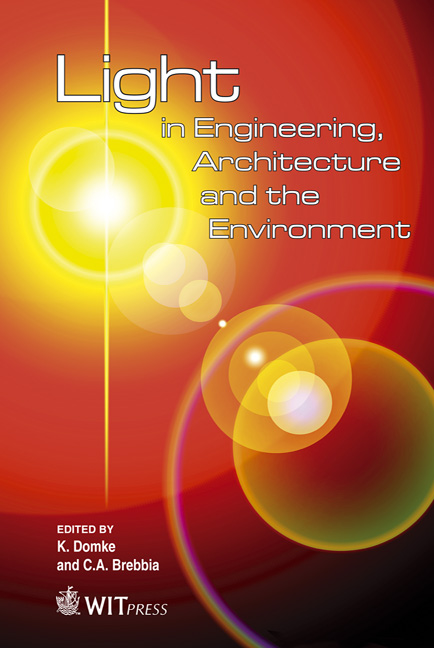Qualitative And Quantitative Daylight Optimisation By Shading Device Experimentation
Price
Free (open access)
Transaction
Volume
121
Pages
12
Page Range
59 - 70
Published
2011
Size
4,107 kb
Paper DOI
10.2495/LIGHT110061
Copyright
WIT Press
Author(s)
M. Fajkus
Abstract
Daylight has been an influential design factor since the beginning of architectural practice, though qualitative concerns, such as atmosphere and effect, have largely outweighed quantitative considerations such as functional and thermal optimisation. This imbalance has only widened as architectural and engineering disciplines have become increasingly specialised, such that architects are exclusively responsible for qualitative design aspects while engineers are responsible for quantitative issues. Thus, the purpose of this body of work was to initiate the design of a prototypical shading structure design which accounts for and encourages overlap between qualitative and quantitative factors throughout the design process. The prototype was developed and tested both by simulation software as well as in physical form as it was constructed and rigorously measured in a unique a full-scale Facade Lab to optimise daylight transmission performance relative to conventional shading systems. Results from the initial prototype test show that even by simply manipulating the singular variable of shading device geometry for an optimised balance of daylight and permissible views, improvements in both categories are immediately achieved relative to comparable conventional shading structures, while using less material. By increasing our quantitative understanding of the cause and effect relationship between shading device design and daylight transmission as well as thermal performance, qualitative design processes can be rigorously measured in an integrated manner. Thus, the research suggests that collaborative common ground can be achieved between architects and engineers from the beginning to the end of the design process, to optimise daylight levels and enhance both the visual experience as well as the thermal performance of architectural spaces. Keywords: daylighting, interdisciplinary collaboration, shading device.
Keywords
daylighting, interdisciplinary collaboration, shading device





